Created in partnership with the Polish Canadian Society of Nova Scotia, September 2020
Last updated, September 2023
Jump to topic:
- Witamy!
- Where is Poland?
- History of Poland
- What do you call someone from Poland?
- Places to visit in Poland
- Polish folk dances
- Polish songs
- Polish Language Challenge
- Polish cuisine and recipes
- Polish star craft
- Wycinanki - Polish paper-cut design
- A Reading List
Witamy!
Welcome to Nova Scotia Polish Heritage Month! Thanks to a proclamation by the Nova Scotia House of Assembly in 2020, every September moving forward will now have this designation to recognize and celebrate the rich history of Polish Nova Scotian contributions to the province’s cultural mosaic.
From early immigrants to Cape Breton in the first two decades of the twentieth century, through refugees of two world wars, war brides, and emigres fleeing communism, to a multitude of professionals, labourers, academics, and artists who have come from the lands of Poland to make a new homeland in Canada, the small but vibrant Polish Nova Scotian community has been making and continues to make significant contributions in all parts of this province. We invite you to learn about and celebrate our culture. You have made us feel welcome, and so we greet you with our own words of welcome: Witamy! #WitamyNS
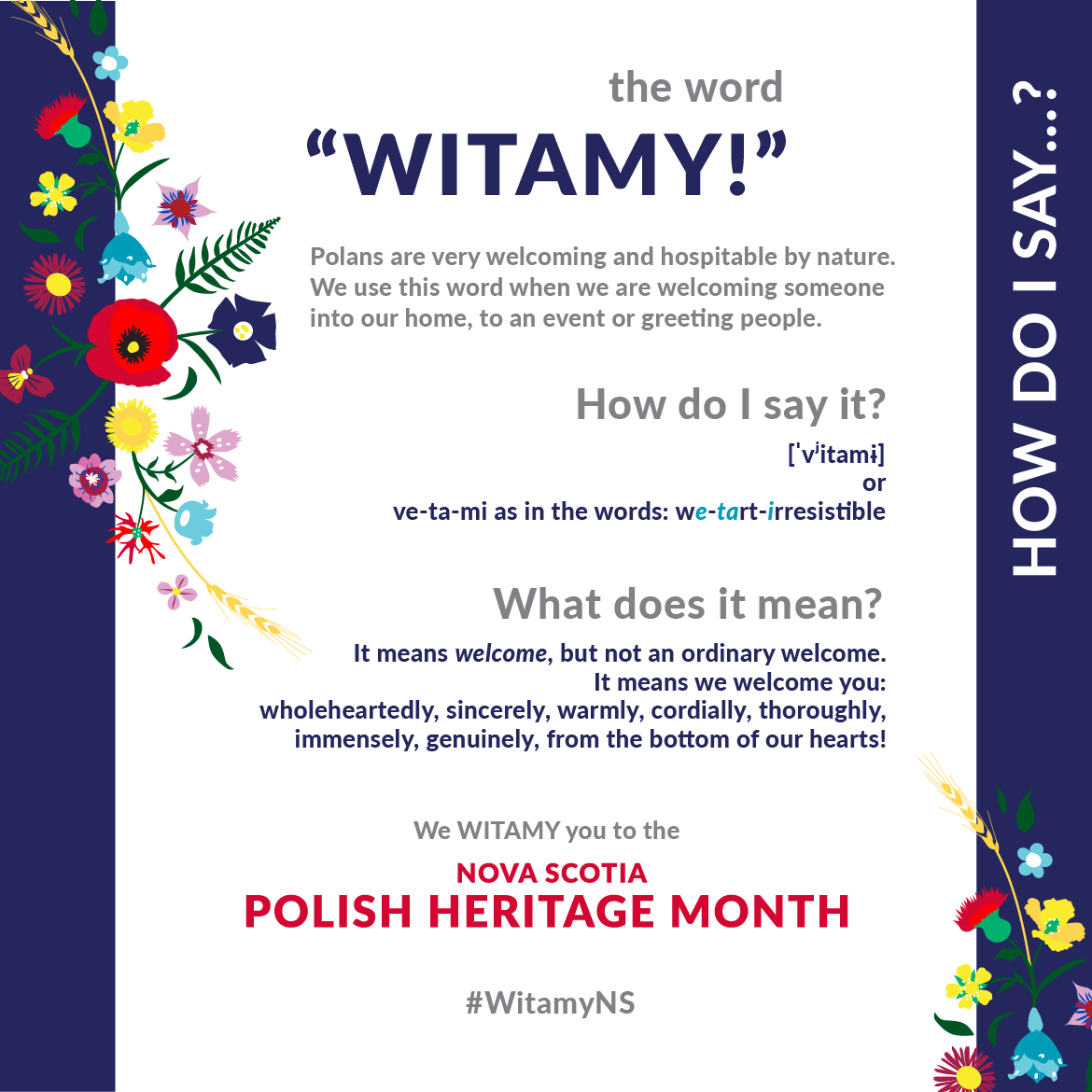
Where is Poland?
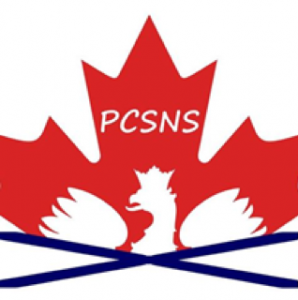 Traveling from Canada, Poland is located across the Atlantic Ocean to the east. Poland is in central Europe and is bounded by seven nations: Lithuania, and Russia's Kaliningrad Oblast to the north, Belarus and Ukraine to the east, Slovakia and the Czech Republic to the south, and Germany to the west. It is one of a group of 13 Slavic countries. Slavs being members of the most numerous ethnic and linguistic body of peoples in Europe, residing chiefly in eastern and southeastern Europe.
Traveling from Canada, Poland is located across the Atlantic Ocean to the east. Poland is in central Europe and is bounded by seven nations: Lithuania, and Russia's Kaliningrad Oblast to the north, Belarus and Ukraine to the east, Slovakia and the Czech Republic to the south, and Germany to the west. It is one of a group of 13 Slavic countries. Slavs being members of the most numerous ethnic and linguistic body of peoples in Europe, residing chiefly in eastern and southeastern Europe.
Poland is located at a geographic crossroads that links the forested lands of northwestern Europe to the sea lanes of the Atlantic Ocean and Baltic Sea, the fertile plains of the Eurasian frontier and the Carpathian Mountains of the south. Poland’s borders ebbed and flowed over thousands of years, but now comprise of an area of 312,696 square kilometres. It is divided into 16 administrative subdivisions or “provinces” with its capital and largest city being Warsaw or Warszawa.
History of Poland
The Animated History of Poland was produced by the Polish Agency of Enterprise Development in cooperation with the Ministry of Economy and was first shown at Polish Expo in Shanghai.
This short video introduces the most significant events in more than a thousand years of the Polish State. It all begins with the Baptism of Duke Mieszko I in 966 and finishes with Poland joining the European Union.
You can follow the path of dramatic and heartbreaking events of the Polish fight for independence during the Swedish Deluge (1655-1660), Partitions (1772, 1793, 1795), German and Soviet occupation (1939-1945)
You can admire the glory of the Polish nation defeating Teutonic Knights in the village of Grunwald (1410), Polish King Jan III Sobieski winning the Battle of Vienna (1683), the proclamation of first the European Constitution (1791), or Lech Wałęsa leading democratic protests against communistic government (1980).
Enjoy watching!
Polish immigration to Canada
The first Polish immigrant on record, was Dominik Barcz, came to Canada in 1752. He was followed in 1757 by Charles Blaskowicz, a deputy surveyor-general of lands. View the full history and more in our Polish Immigration to Canada presentation, opens a new window.
What do you call someone from Poland?
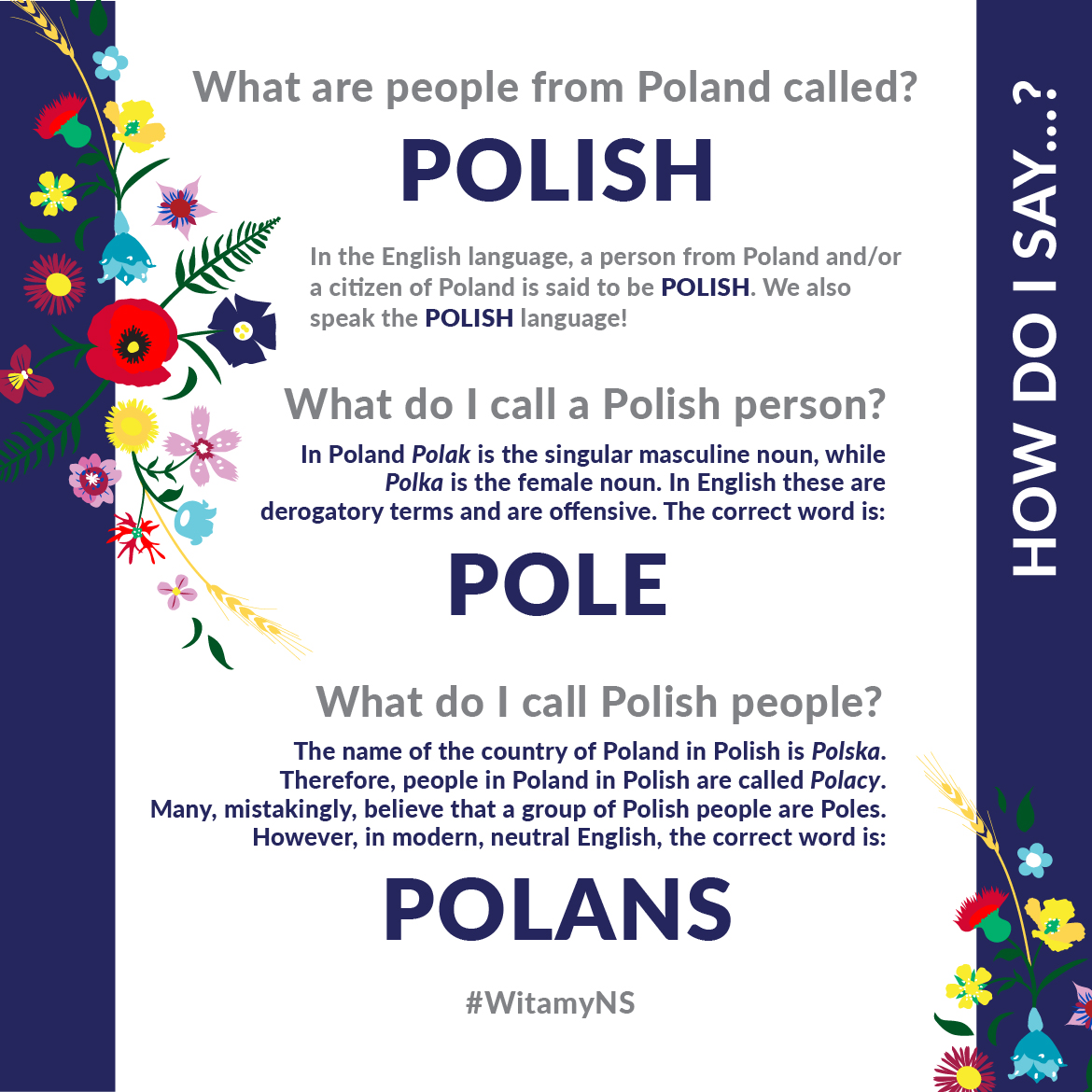
A person from Poland and/or citizen of Poland is said to be “Polish." We also speak the Polish language. The name of the country Poland in Polish is Polska. Therefore, Polish people, in Poland, in Polish are called Polacy. The singular, masculine noun is Polak, while Polka is the female noun. The ending of the word varies in speech depending on the conjugation.
What do we call a Polish person in English?
Polak, Polack, Polakk, Pollack, or even Pollock (that is a fish!) are ethnic slurs and are considered a derogatory reference. These terms are considered an insult. There is evidence that Polak was used in English History to identify a Polish person up until the late 19th century. Today, however, in modern, neutral English the noun for a Polish person (male or female) is Pole.
What do we call Polish people in English?
If Pole is used to identify a single Polish person, it would be natural to say Poles for multiple people. This is a common mistake. Even by Polish people! The correct word is Polans. The name comes from an ethnonym of one Western Slavic Tribe during the 18th and 19th Centuries – that of Polans. The Tribe area was referred to as Polonia – the land of the Polans (hence Poland). Pole (pronounced Poleh) in Polish means open area, plain or field. The Tribe would have been known as – people of the field, or field dwellers. It is fairly relevant today as fields are common in the Polish landscape and many still live in plain areas.
Do you have many friends who are Polans? Perhaps you go to school or work with a Pole? Go ahead, call me a Pole! We prefer that over being called a fish (Polak) any day in English!
Best places to visit in Poland
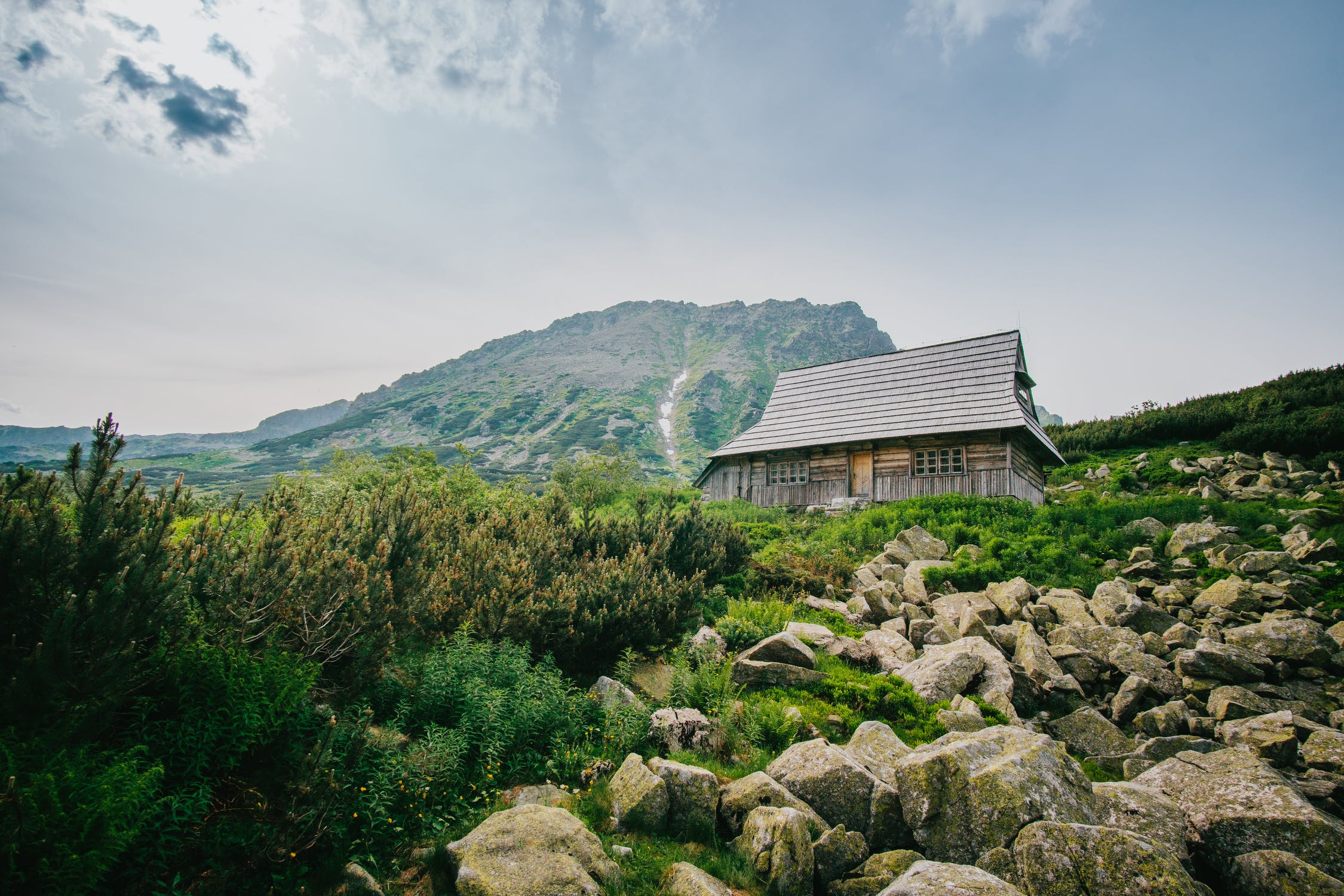
While international travel may be out of the question for the foreseeable future, you can still dream about and plan a trip to Poland! Here are some tips.
- 11 Best Places to Visit in Poland by Planetware, opens a new window
- Poland's Most Beautiful Places by CNN travel, opens a new window
- Best Places to Visit in Poland by Touropia, opens a new window
Polish folk dances

Polish folk dances, with their colourful regional costumes and wonderful music, are incredibly beautiful!
Every dance is rooted in a particular region and is a part of local culture and history. The history of the traditional dances of the different Polish regions goes back centuries. Many of these dances were brought to the ballrooms following Napoleon's expansion into Central and Eastern Europe and became very popular. Nowadays, you can watch the dances performed during festivals, official events and holidays.
Frederic Chopin often incorporated folklore into his works and thereby promoted Polish folk music all over the world.
The most famous of the traditional Polish dances are Krakowiak, Kujawiak, Mazurek, Oberek, and Polonaise.
Definitions via Wikipedia
Krakowiak
Krakowiak [kraˈkɔvʲak] is a fast Polish dance from the region of Kraków and Lesser Poland. The folk costume worn for the dance has become the national costume of Poland.
Kujawiak
Kujawiak [kuˈjavʲak] is a slow and the most romantic of the national Polish dances. It came from the region of Kuyavia in central Poland.
Mazur
Mazur (or Mazurka, Mazurek) came from a cultural region of Mazovia. It’s a fast dance in which pairs glide across the floor. The Mazurka became very popular at the ballrooms of Europe in the 19th century.
Oberek
Oberek is a fast, lively dance. The word "oberek" came from "obracać się" which in Polish means "to spin". It consists of many dance lifts and jumps. According to popular belief, you could spot the best dancer by his ability to dance a vigorous oberek with a glass of water on his head.
Polonaise
Polonaise [pɒləˈneɪz] is the most elegant of the Polish national dances, its name is French for "Polish”. Originating as a peasant dance known under various names – chodzony("pacer"), pieszy ("walker") or wielki ("great"), later, in the 17th century, Polonaise was introduced in French courts and became very popular throughout Europe.
The heritage and national traditions of Poland were brought to different countries around the world by immigrants and sustained across generations.
Videos: Watch Polish dance
- The White Eagle Folk Dance Academy’s performance during Polish Festival in Nova Scotia
- Oberek
- Kujawiak
- Short Documentary from NFB: Features the traditional music and pageantry of Polish-Canadians in Manitoba; made in 1944.
- Children dancing during the Polish Festival in Melbourne, Australia
- National Dance of Poland – Krakowiaczek/Krakowiak/Polonaise, Toronto, Canada
Polish songs
Co mi Panie dasz?
The song “Co mi Panie Dasz?” (Lord, what are you going to give me?) was recorded during COVID-19 lockdown in April 2020 by Polish composer, Adam Sztaba. It is the remake of an extremely successful Polish hit from the 80s.
Adam Sztaba invited Polish professional artists and amateurs on Facebook. Musicians who wanted to participate in this challenge were working from their homes and did not have any idea how many people would be involved in the project.
The recording was made in just six days and 732 artists participated in this venture! The younger participant is only 8 years old while the oldest one is 75.
Polish lyrics
Co mi Panie dasz?
Karuzela gna, w głośnikach wciąż muzyka gra
Czuję, jak w jej takt kołyszę się cała
I raz, i dwa, i trzy i w górę serca, wielki czis
Czujność śpi, trochę mdli jak szarlotka z ranaCo mi, Panie, dasz w ten niepewny czas?
Jakie słowa ukołyszą moją duszę, moją przyszłość
Na tę resztę lat?
Kilka starych szmat bym na tyłku siadł
I czy warto, czy nie warto mocną wódę leję w gardło
By ukoić żalCo tam nagi brzuch I w górę połatany ciuch
Czuję ten wiatru pęd czy głowa odpada
I raz, i dwa, i trzy I wcale nie jest zimno mi
Z góry pluć, gumę żuć, tu wszystko wypadaCo mi, Panie, dasz w ten niepewny czas?
Jakie słowa ukołyszą moją duszę, moją przyszłość
Na tę resztę lat?
Kilka starych szmat bym na tyłku siadł I czy warto, czy nie warto
Mocną wódę leję w gardło by ukoić żal
English lyrics
Lord, what are you going to give me?
A merry-go-round is going fast, a music is coming from the speakers
I can feel my body swinging in its rhythm
One, two, three, and up we go like a high C note
Cautiousness is asleep, I feel a little nauseous, as if I had an apple pie in the morningLord, what are you going to give me in such troubled times?
What kind of words should comfort my soul and my upcoming future?
A bunch of old rags for me to sit on my butt
Whether it is worth it or not, I pour strong vodka down my throat to calm down the regretI do not care about my naked belly, my patched clothes are fluttering
I feel the wind coming at me, tearing my head off
One, two, three, and I am not cold at all
It is okay here to chew a gum or to spit from aboveLord, what are you going to give me in such troubled times?
What kind of words should comfort my soul and my upcoming future?
A bunch of old rags for me to sit on my butt
Whether it is worth it or not, I pour strong vodka down my throat to calm down the regretA merry-go-round is going fast, a music is coming from the speakers
I can feel my body swinging in its rhythm
One, two, three, and up we go like a high C note
Cautiousness is asleep, I feel a little nauseous, as if I had an apple pie in the morningLord, what are you going to give me in such troubled times?
What kind of words should comfort my soul and my upcoming future?
A bunch of old rags for me to sit on my butt
Whether it is worth it or not, I pour strong vodka down my throat to calm down the regret
Żeby Polska Była Polską
by the Chair of the PCSNS Board Paul Lenarczyk
Polish Language Challenge
The Polish language can be a tricky language to learn! In this video, Victoria asks non-native speakers to challenge themselves and dive into the reading of the Polish Words.
Polish cuisine
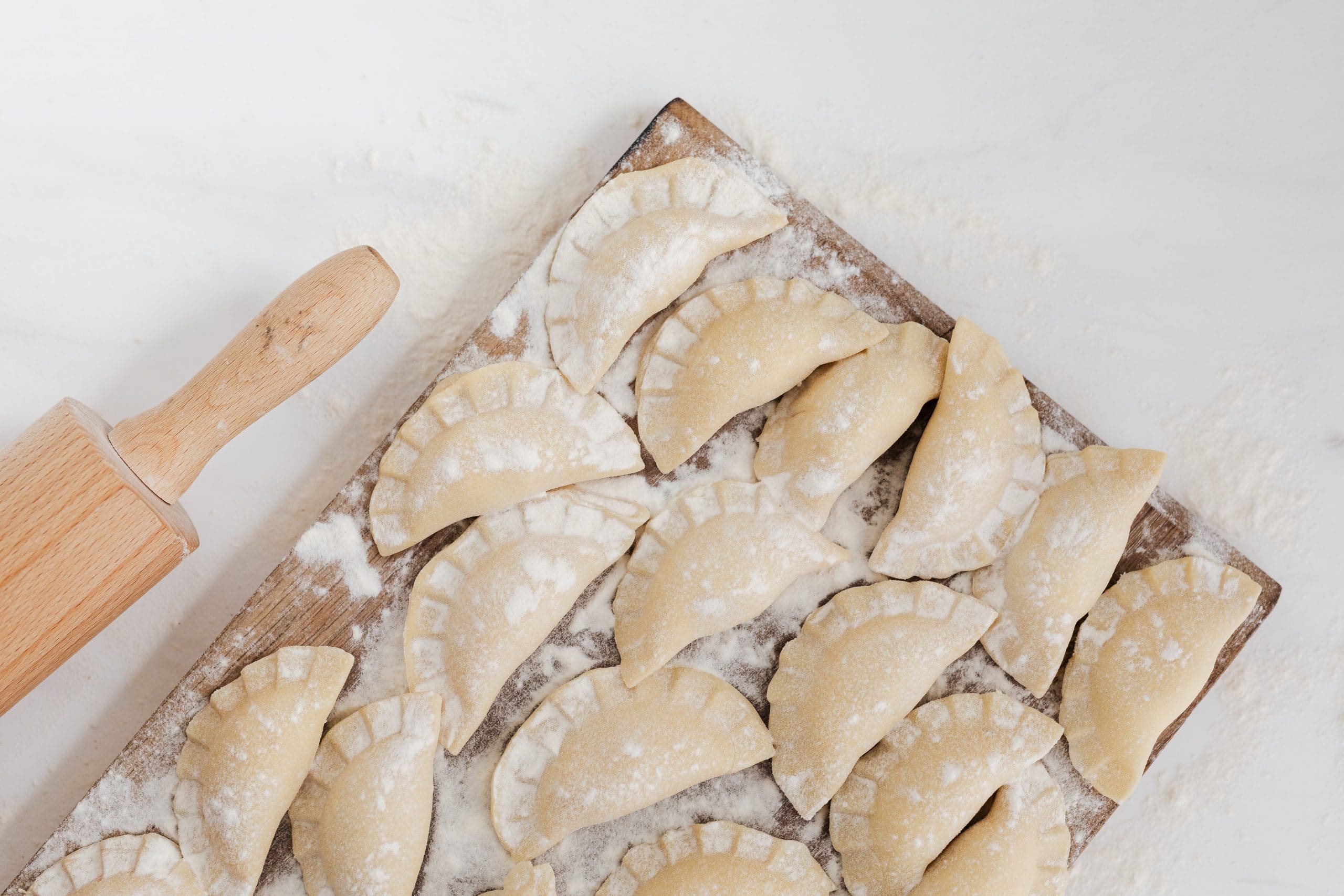
Everyone loves pierogies! - that is, pierogi (one pierog, two pierogi). So do Polish people! But did you know that there are many, many kinds of pierogi? Not just the traditional fresh quark, boiled and minced potatoes, and fried onions. There are: sauerkraut ones, and meat ones, mushroom, and strawberry, blueberry, and sweet quark, etc.…
You may have also tried other foods such as Kiebasa (Polish word for sausage), Cabbage rolls, Polish pickles or perhaps potatoes with dill, meat stew, or a Polish doughnut? Poland has a rich and vibrant cuisine referred to as, Kuchnia polska. It is very eclectic and shares many similarities with neighbouring German, Czech, Slovak and Silesian culinary traditions. Polish cuisine is rich in meat, with a wide range of vegetables, spices, and herbs. It is also characteristic in its use of various kinds of noodles, as well as, cereals and grains. Polish cooks do not skimp on butter, cream, eggs and sugar. It is the ultimate comfort food! Traditionally there are several dishes during a meal starting with a soup. Presentation is just as important as taste, so dishes are often demanding in preparation.
Learn more
- Check out these 100 most popular dishes from Poland, opens a new window from Taste Atlas. Grab a snack because they are sure to make your mouth water!
- In 2012, local Polans, Margaret and George Bialowas, from Margaret’s Pierogies were on CTV Atlantic explaining the traditional food. Watch the clip here
- Here is a video featuring what some taste testers' thoughts on some of the more traditional Polish dishes.
Recipe: Polish Pierogies
by Victoria Shulga
Pierogies filled with mashed potatoes and sauteed mushrooms, tossed with crisp sauteed onion and melted butter are just irresistible. First of all, you need to know that anyone can make them! Grab your friends and family and spend an afternoon rolling, stuffing and cooking these delicious pierogies together!
Ingredients
Ingredients for the filling:
- 1 lbs russet potatoes (5 medium), peeled
- 1/2 tsp salt
- 2 tbsp melted butter or oil
- 200-250 gr of mushrooms
For the dough:
- 1 cup of warm almost hot liquid (water, milk, or half and half)
- 1 large egg
- 1 tsp salt
- 2-2.5 cups all-purpose flour
- 1-2 tablespoons of oil
For the toppings:
- 1 onion chopped
- 2 tbsp butter or oil
- Sour Cream to serve
Cooking instructions
Step 1: The filling
Making homemade Pierogi starts with a great filling. Peel the potatoes, cut them, place in a pot of water for about 20 minutes until fork tender. Then mash the cooked potatoes, add salt and pepper to taste and let it cool completely. While the potatoes are cooling, we saute the chopped onion in a little butter or olive oil until softened and have a golden colour, add some chopped mushrooms , salt, pepper to taste and saute them about 10-15 more minutes more. Add the onion with the oil to the cooled potatoes along with mushrooms and mix them.
Tip: To save time on the day you’re making and serving your pierogies, make the filling a day or two in advance then keep it sealed tight in the fridge until ready to use.
Step 2: The dough
Pierogi dough is a simple mixture of flour, egg, water and just a touch of salt and oil. After mixing together the flour and salt, crack an egg into the center of the bowl and combine with the flour mixture. Gradually add hot water to the bowl until your dough is soft and slightly sticky. Add some oil and knead by hand until the dough is no longer sticky. If the dough appears too wet, add more flour a tablespoon at a time. If the dough is too crumbly and dry, add more hot water a little at a time.
Step 3: Forming pierogies
Here comes the fun part! You get to roll out the dough, shape and stuff your pierogies.
Step 4: Cooking or freezing
It’s time to cook or freeze your pierogies for a future dinner. Bring a pot of water to a boil and add 1 teaspoon of salt. Add pierogies one at a time. Once they are coming up and floating, and the water is back to a boil, cook additional 3-5 minutes. Remove pierogies to a bowl and put some melted butter on them.
They’re ready to be served! You can seve your pierogies with sauteed crispy onion and sour cream.
You can also fry pierogies once they are slightly cooled. Fry a few at a time until the edges are golden and crisp.
Recipe: Polish Brine Cured Cucumbers or Polish Pickles (Ogórki Kiszone)
Polans cannot live without Polish Pickles. They are so loved; jars of homemade pickles are given as gifts here in Canada! Once the season appears in August, we are all off buying pickling cucumbers, horseradish root, garlic, and fresh dill to make our beloved Ogórki Kiszone. These are not ordinary pickles, which are made with vinegar. These are preserved cucumbers, naturally fermented in a flavourful brine.
The fermentation process, called lacto-fermentation, is what gives the cucumbers a sour taste. Lacto refers to lactic acid. All fruits and vegetables have beneficial bacteria such as Lactobacillus on the surface. In an oxygen-free environment, these bacteria convert sugars into lactic acid, which inhibits harmful bacteria and acts as a preservative. It’s also what gives fermented foods such as sauerkraut, kombucha, or sourdough bread their characteristic sour flavor. These are so healthy for you! So, get pickling and get your daily dose of Probiotics naturally!
You can eat these pickles with everything. Once you have mastered the art, you may dare to drink the brine out of the preserved jar of pickles or even make Polish Pickle soup! Yum!
Ingredients
- Wide mouth jars: As many as you need for the amount of pickles you have. It all depends on your size of cucumbers and the size of your jars.
- Pickling cucumbers: Medium-sized are the best. Not too big and not too small. Make sure none have cuts, bruises, mold or tails on them.
- Pickling salt: A good rule of thumb is one heaping tablespoon per litre of water. Best way is to add enough salt that it will make the water a bit saltier than you’d like it to taste. That was my mother’s measuring strategy! But it works!
- Water: As much as you need to fill the number of jars and pickles you have. Best way to measure is fill one of your jars with pickles and use that as your measuring jar. It’s about ¾ of the jar to be filled with water. NOTE: cucumbers and ingredients should be completely submerged so that they do not mold and so they’re in an oxygen-free environment.
- Mustard seeds
- Peeled garlic
- Stems of flowering fresh dill
- Fresh horseradish root peeled and cut into sticks
- Bay leaves
- Other optional flavours: peppercorn, pepper flakes, hot peppers, dill seeds, caraway seeds, cumin
Instructions
- Make brine ahead of time. It will need to cool before it is used. Brine is made by boiling water and adding your pickling salt.
- Wash your cucumbers in cool water. Let them soak for 20min to allow dirt to dissolve. After soaking gently rub each cuke clean.
- Sterilize your jars using whatever method you like. It is like sterilizing your jars for jam. Wash your jars with water and mild detergent. Rinse them well. I boil water in a kettle and pour the boiling water over my jars and lids. Let sit for 5min before removing with tongs. You can also set your oven to 225F and place jars and lids into the oven until you need them
- Tightly pack the cucumbers into the sterile jar, you want to squeeze them in, so they’ll stay submerged and not float to the top of the water. You can turn your jar upside down to test!
- Add the mustard seeds, garlic, dill (fold to fit), horseradish, bay leaves and any other flavours.
- Place the jars onto a waterproof tray, like an aluminum baking sheet or tray.
- Fill the jar with the cooled brine to within 1/4 from the top, all of your ingredients should be submerged.
- Loosely cap the jar with a sterile lid. The lid must be loose to allow the gases produced during fermentation to escape. Some brine may flow out over a few days (and catch in your tray).
- Depending on your taste and your patience, the cucumbers can be eaten after 4 to 5 days, called małosolne, but they are really not ready with their full flavour and fermentation until 1 to 3 weeks. Note: The clear water in the jars will become cloudy and the pickles will become darker green. This is perfectly normal and good!
- Fermentation will end after 5-6 weeks. If you have any jars left at this point, the lids should be tightened to prevent spoilage and stored in a cool and dry place. We like to save at least one jar for Christmas!
Polish star craft
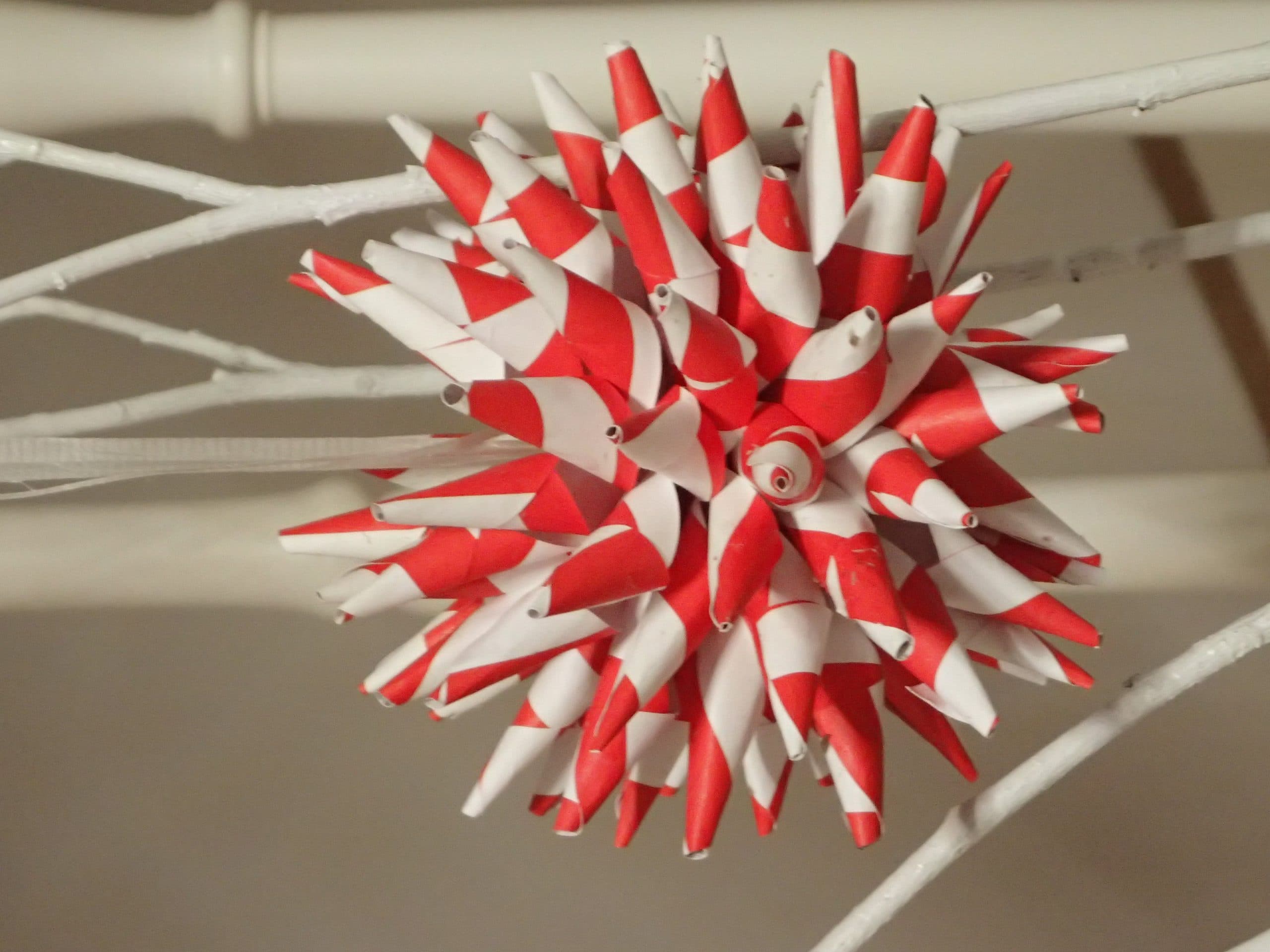
Christmas is a very important holiday in Poland. The Christmas tree is a traditional decoration in the home, sometimes left up well into the New Year.
Traditionally, the Christmas trees are decorated with glass baubles or bompki. Poland produces some of the finest hand-blown glass Christmas ornaments in Europe. Polish glass ornaments have a very old tradition and a reputation for quality, design, artistic imagination, and craftsmanship. Mouth-blown and hand-decorated, they are very delicate art treasures valued by families and collectors worldwide.
Christmas trees are also decorated with garlands and many homemade ornaments made by hand and by children, such as: painted eggshells, shiny red apples, walnuts, wrapped chocolate shapes, candles, etc. One of these crafted ornaments is called the Polish Star.
It is hard to know where this star originated and if it really is Polish. Many European countries have a paper star tradition. A Froebel star (German: Fröbelstern) is a sixteen tipped, three-dimentional, paper origami decoration common in Germany. It can also be referred to as the Advent star, Danish star, German star, Nordic star, Pennsylvanian star, Swedish star, Christmas star, or Polish star. However, another similar star, called the Moravian star, looks more like the geometrical shaped Polish Star takes on.
These whimsical pointed spheres are a beautiful way to decorate your tree during the holidays, or even just your room or garden party. You can use any decorative paper such as wrapping paper or scrapbooking paper and items you can find around your house.
Check out this video above to make your very own Polish Star!
"Wycinanki" – Polish 'paper-cut design'
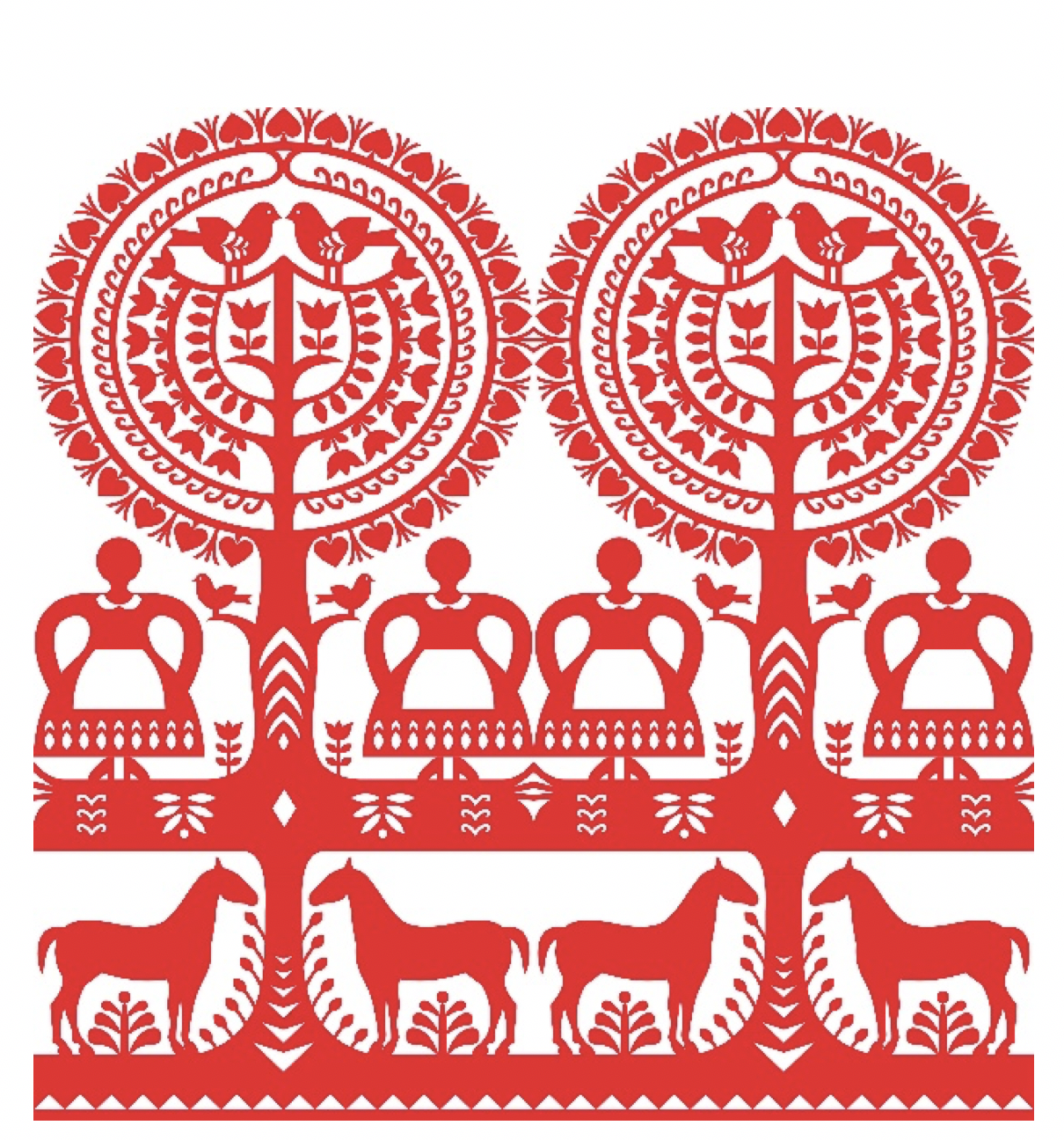
"Wycinanki" pronounced Vee-chee-non-kee is the Polish word for 'paper-cut design.'
Wycinanki originated with shepherds cutting designs out of tree bark and leather. They have been a popular folk craft in Poland since the 1900s.
Colorful Wycinanki were pasted on furniture or roof beams as decoration, hung in windows, and given as gifts.
The most well- known modern styles of Wycinanki come from two districts. One is the Kurpie cut out. This is usually a symmetrical design, cut from a single piece of colored paper, folded a single time, with spruce trees and birds as the most popular motifs.
The second style comes from the area of Łowicz. It is distinguished by the many layers of brightly colored paper used in its composition.
Techniques include cutting, clipping, punching, tearing, and carving of paper, as well as nalepianki in which multiple layers are glued together. Wycinanki can take on various shapes: stars, circles, trees, rosettes, dolls, roosters.Nature and beliefs were the major sources of inspiration.
But the shape isn’t al—the vast majority of Polish Wycinanki are very colourful. To create a fancy wycinanka people use various coloured papers. The colours that dominate in Polish Wycinanki are shades of red, green, yellow, blue and gold.
Completed Wycinanki were hung in windows, on walls and from ceiling joists.
Nowadays, they often can be found as decorations in heritage parks, museums, and cultural centres.
Wycinanki have become so well-known around the world that many souvenirs and objects are decorated with a Wycinanka motif.
Wycinanka motifs
https://www.youtube.com/watch?v=jQz1lJ0X8Cc&list=PLFQexP5pHfThkWxguhjhvoiF5jmNBun6m
How to make Wycinanka
https://www.youtube.com/watch?v=kzXcA4nbFBI
We've put together a list of books to help you explore Polish literature, history, art, culture and cooking.
Pan Tadeusz is a Polish national epic that has been translated into 33 languages! It’s a panoramic view of early 19th Polish society and probably the most known and remarkable piece by Poland’s great Romantic poet and writer.

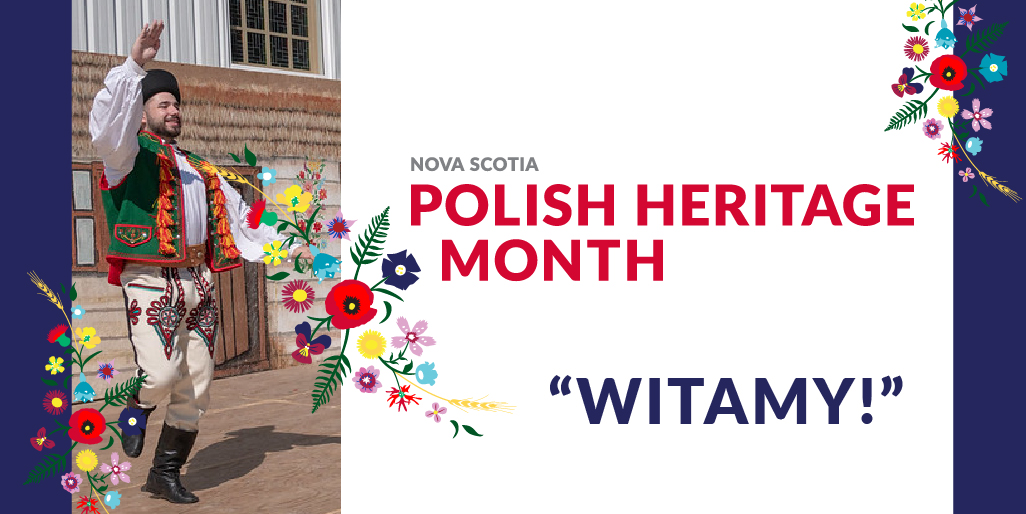


Add a comment to: Polish Heritage Month: A Virtual Celebration